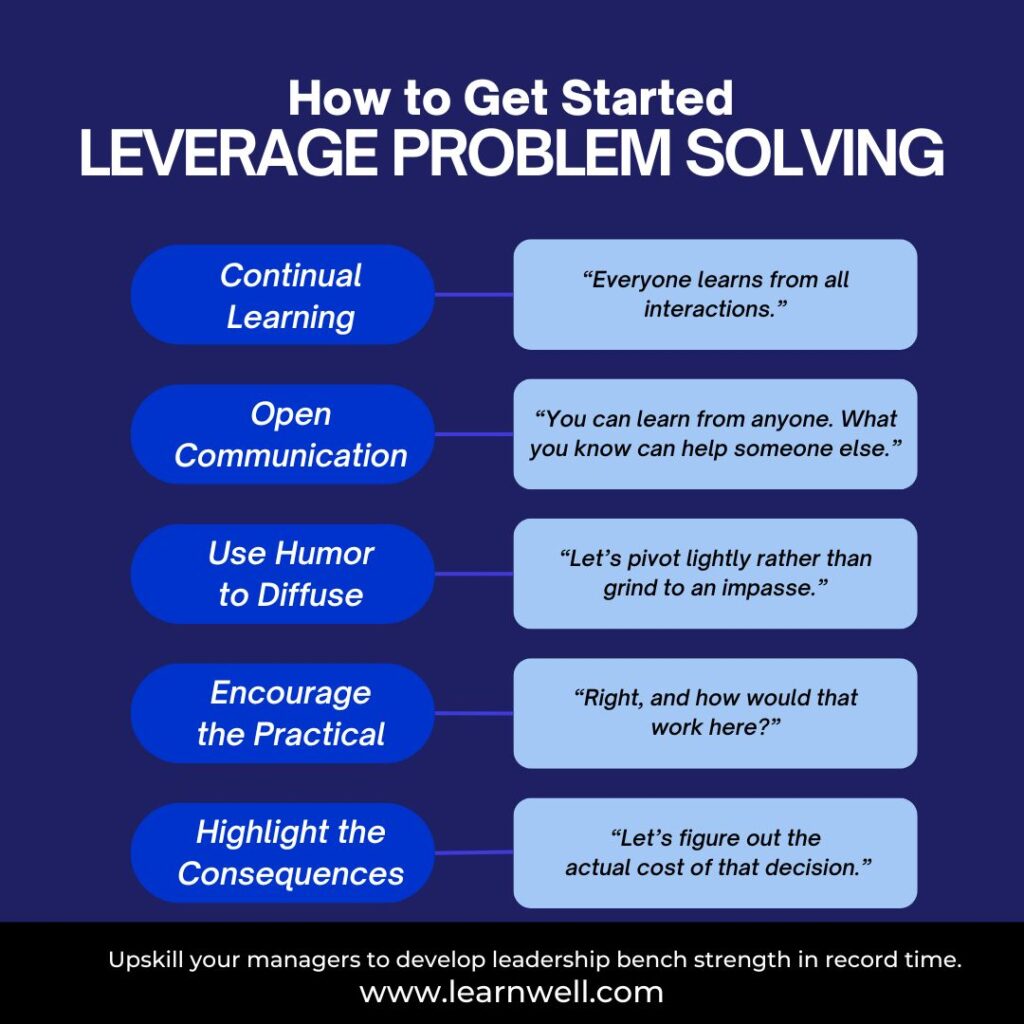
Everyone says high performance is all about doing better, producing more or higher value results.
Here’s an example that I shared with a group of 25 tech company senior managers recently when I was asked how problem solving can be approached differently to better leverage its benefits across different departments.
Case: Spotting High Performance Problem Solving in a Planning Meeting
At a fast-paced Chicago-based networking firm, Timothy, the Senior Director of Infrastructure Projects, stood out as a high performer not just for his engineering smarts, but also for how he made others on his team better at problem solving.
He held different types of meetings focused at each stage of a large data center fiber optic network project. He would huddle with the project managers to walk through the steps and make sure that what had been learned from before was being applied going forward.
However, in my pursuit of working with overwhelmed tech managers who are capable of being admired and effective leaders, I sometimes have the privilege of pointing out things that are going well. Those “things” whether they are tools, processes, communications skills, management systems, productivity habits,… and even GPT prompts, now, create a set of best practices that are real and relevant, especially to the company where they originate.
They also serve as effective teaching stories that you can learn from when you are focused on gaining new insights that you can apply to issues or challenges that you’re facing.
Tim knew that getting the solution right for the customer and within the parameters was the primary objective but not the sole one. Designing and building data centers and fiber networks contain a myriad of factors that are further complicated by technical unknowns (such as compatibility with software updates, the need to add additional layers of protection and data privacy) as well as environmental factors (electronic components are sensitive to things like heat and humidity!), and more.
With his experience in this rapidly advancing field, he knew that the most value he could contribute would be in teaching and mentoring the upcoming talent so that they could recognize, analyze, and address problems early on when they were easier and less expensive to fix than once they were deployed in the field.
His advice was practical yet rooted in the engineering principles that were commonly understood though not always applied. In project meetings, Tim didn’t have to have the last say. He often exaggerated an undesirable outcome or implications of a poor engineering design to bring home a point.
Inviting Debate – A Worthwhile Investment
For instance, one time he launched into a response to a proposal this way: “Oh, alternative cooling can reduce upfront costs of the data center by about 36%. Sam, could you enlighten us?”
Tim had shut the door on passive cooling systems for years because of their inadequate ability to handle high demand environments, but Sam was a new project manager. He hadn’t been part of those discussions, decisions, debates, or conversations. He was looking to make an impression with his initiative and Tim made a point to acknowledge that aspect of his contribution.
Sam initially defended his proposal. Through Socratic-like questioning, Tim had Sam deflate the top supposed benefits in his proposal and deepen his understanding of the risks. It took about less than 15 minutes – far longer than simply saying, “No, we’ve been over this before and it’s not a workable solution in these situations. Sorry, dude.” Yet, Sam would remember this uncomfortable, yet fair and well-intended, conversation the rest of his career; others in the room had gaps in their understanding filled in and key points reinforced.
Use the Power Problem Solving to Its Full Potential
Let’s extract some worthwhile lessons to benefit from not just solving the problem, but also building an organizational culture that learns, grows, and cares about improving.

These secondary gains of high performance problem solving are available to you whenever you choose to employ them. Being aware of how to multiply the power of problem solving is more than half the battle.
- Prioritize Continual Learning: This ensures that each project contributes to the cumulative knowledge of the team, fostering a culture of continuous improvement.
- Cultivate Open Communication: Open communication channels enhance problem-solving by pooling diverse perspectives and experiences.
- Use Humor to Diffuse Tension: This approach can make problem-solving sessions less daunting and more engaging for all participants.
- Encourage Practical Application of Theory: Bridging the gap between theory and practice enhances the effectiveness of solutions and ensures they are robust under real-world conditions.
- Highlight the Consequences of Decisions: Understanding the real-world consequences of decisions can sharpen problem-solving skills and prevent costly mistakes.
Each of these secondary gains is a topic for discussion, debating, and diving deeper into, especially if leveraging problem solving is on your agenda for your company.
Which would you begin to apply first?
Published May 5, 2024

